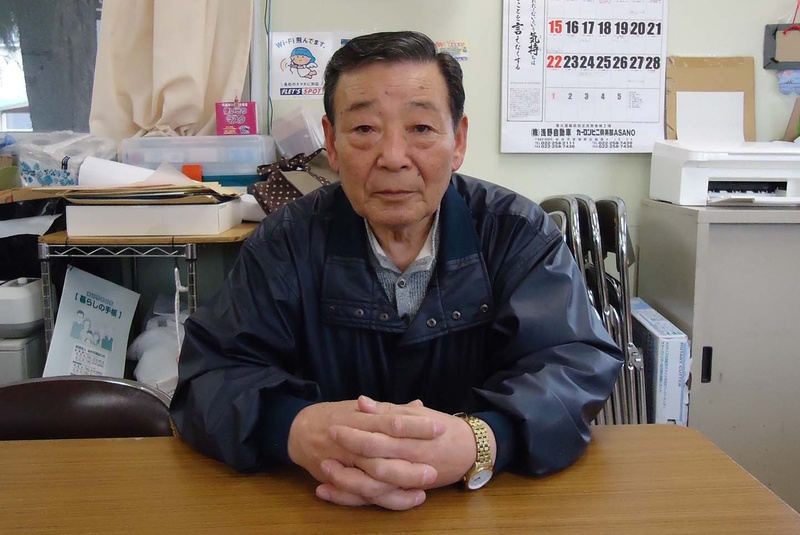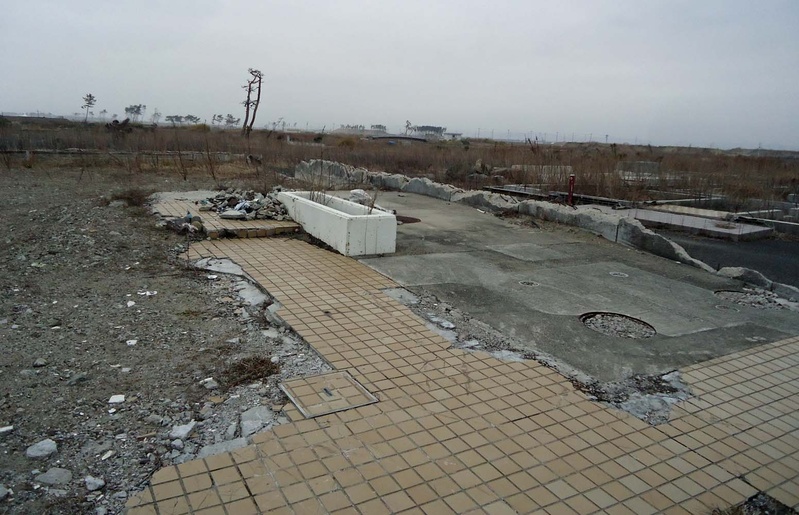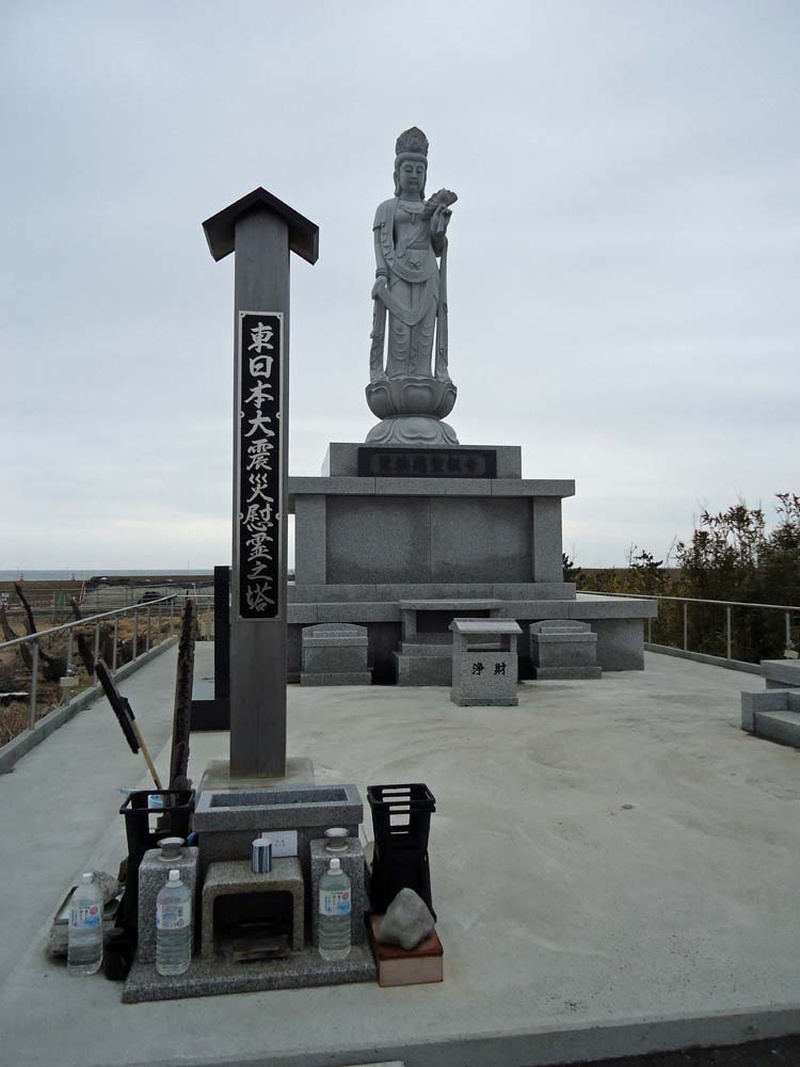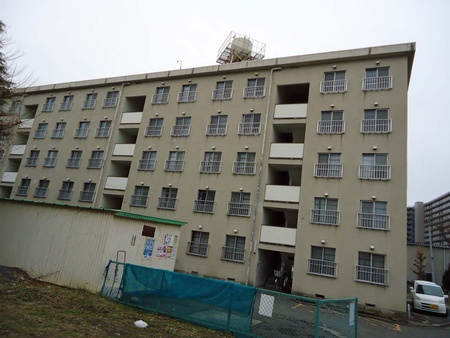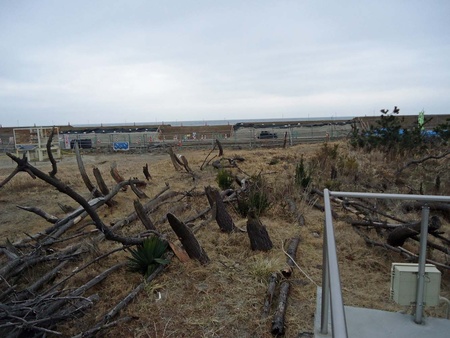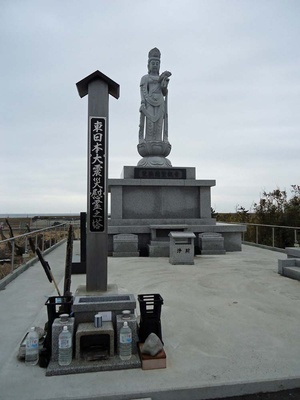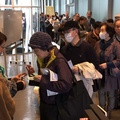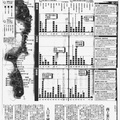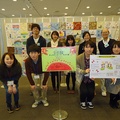On February 14, 2015, just before the fourth anniversary of the disaster, I visited one of the victims. His name is Katsuhiko Okubo (74). He lives in a rented public housing unit prepared for disaster victims.
At the time of the disaster, Okubo was living in the Arahama area of Wakabayashi Ward, Sendai City. A tsunami of about 9 meters hit the area, which is a popular swimming beach in the summer. Okubo's house, which he built five years ago with his retirement money, was completely engulfed by the wave.
"A tsunami is coming soon." When Okubo heard this news on the radio, he immediately ran out of his house. He was the head of the neighborhood association and had to tell the residents to evacuate immediately.
After the evacuation call by bicycle was over, they evacuated to Arahama Elementary School. Soon after, the tsunami struck. Okubo, who was in a classroom on the second floor, just watched in amazement as the tsunami, high enough to reach the second floor ceiling, flowed down the hallway. Perhaps because the flow was in one direction, the water that entered the classroom only reached knee-level. Of course, it wasn't that terrifying.

The next day, he moved to the gymnasium of the Ground Self-Defense Forces Kasumigaseki Garrison. After that, he moved to Hachiken School and Sunpia Sendai, and then settled in his current temporary residence. He currently lives with his wife.
Currently, 51 households live in the rented public housing where Okubo lives. This community is a sort of ragtag one, with some people evacuated from other cities, such as Higashimatsushima. However, about 80% of the households participate in activities such as mowing the grass in the neighborhood. According to Okubo, it is a community with good ties.
The area where Okubo lived is a disaster-prone area. Neither new construction nor expansions are permitted. As a result, he will be relocating. Former residents have been given three options by the city of Sendai: 1) collective relocation, 2) individual relocation, or 3) moving into public housing for reconstruction. Okubo chose collective relocation. The house being built at his new location was completed this February. He will be moving in March. Okubo sounded a little proud when he talked about this.
"Was the support from the government sufficient? Was there any support that you felt was lacking?"
In response to my question, Okubo said, "I think it was enough." However, he added, "However, while various forms of support seem to have been delivered to those living in prefabricated temporary housing, initially it did not reach those living in rented public housing. The place where I lived was not even on the map showing evacuation sites."
"What was the government's response?"
In response to my next question, Okubo said, "The city hall held several public meetings for us. However, our questions and requests were not answered on the spot, and we had to take them home many times. We also requested that the entire village be relocated, but our request was not accepted."
Why do you think it's taking so long to recover?
Perhaps because it was such a difficult question, there was a delay before an answer was given. Then, Mr. Okubo said, "Maybe it was because the residents' opinions were not unified?"
Shortly after they began living in temporary housing, the opinions of Arahama residents were divided into two camps: those who wanted to rebuild their lives in their original location, and those who wanted to relocate inland, prioritizing their own safety. In November 2011, Sendai City decided to target the area for relocation, while listening to the opinions of the residents.
The number of households in the areas targeted for relocation is approximately 1,540. As mentioned above, these households were given three options. As of August 1, 2014, 675 households had chosen collective relocation. 514 had chosen individual relocation. 317 had chosen public reconstruction housing. Another 34 had yet to decide. 2
If they choose collective relocation, the national government will purchase the land affected by the disaster (optional), subsidize moving expenses, and subsidies for interest on rebuilding homes and acquiring land. In addition, Sendai City will subsidize the costs of rebuilding homes and acquiring land, and those who wish to do so can borrow land for relocation free of charge for up to 50 years.
On the other hand, if an individual relocation is chosen, the same support is available as for those who choose collective relocation, but in this case, the free loan of land for relocation, which is Sendai City's unique support measure, is not available.
As of the end of September 2014, 728 units of public reconstruction housing (apartment buildings), another option, had been completed. All 3,206 units are scheduled to be completed by the end of March 2016.
While options for rebuilding homes are available, the reality is that some people have no choice but to continue living in temporary housing. As of January 1, 2015, the occupancy status of emergency temporary housing in the city is as shown in the table below. The current number of households living in temporary housing is about 60% of the peak at the end of March 2012. Is this a high or low number? Opinions are divided.
Types of temporary housing | Number of households living in the building (households) | Number of households living in the building (households) |
Prefabricated temporary housing | 802 | 1,346 |
Private rental housing 3 | 6,043 | 9,838 |
Rented public housing, etc. | 365 | 825 |
total | 7,210 | 12,009 |
The official Sendai City website, updated on January 9, 2015, states the following about the period during which people can live in emergency temporary housing: 4 Emergency temporary housing will be provided for a total of five years or less. It is likely that most residents will be forced to move out by next year, the fifth year since the disaster. This means that they will have to pay rent, which they were not required to pay while living in emergency temporary housing, or the cost of purchasing a new home.
What I have mentioned so far is about the reconstruction of homes and lives of disaster victims. At the same time, Sendai City is also working on tsunami disaster prevention measures. The construction to raise the elevation of the prefectural road is one of these. The plan is to raise the elevation of the prefectural road, which runs about one kilometer inland from the coastline, to about six meters. This idea may be closely related to the lesson learned from the fact that the Sendai Eastern Road acted as a breakwater when the tsunami invaded land after the Great East Japan Earthquake.
Other tsunami disaster prevention measures being implemented include the construction of evacuation roads and tsunami evacuation facilities, and the development of coastal parks. These require negotiations with landowners and coordination with the local community, so it looks like it will take several years to complete the construction. This shows the depth of the scars left by the earthquake and the thoroughness of the reconstruction plans drawn up by the government.
The 3rd United Nations World Conference on Disaster Risk Reduction will be held in Sendai for five days from March 14th. This is a major event that will welcome participants from 193 countries. Sendai is busy with the final preparations. What kind of information will be sent from the disaster area to the world in front of the many people welcoming them from each country? As a resident of the host city, I am very interested to know. I would be a little happy if this also includes feelings of gratitude for the support that has been received from overseas...
Notes:
1. Rented public housing, etc.: Public housing owned by cities and other organizations, or company housing, that is rented out free of charge to disaster victims.
2. Among the cases where detached houses are constructed and relocated, collective relocation involves relocation to areas provided by the city, while individual relocation involves relocation to other areas. Public housing for reconstruction is basically collective housing, but there are also some detached houses.
3. Privately rented housing: Apartments and condominiums owned by private individuals that the prefecture rents and rents out to disaster victims free of charge.
4. Reference material: Sendai Reconstruction Report Vol.27
http://www.city.sendai.jp/shinsai/report/report27.pdf
© 2015 Tsutomu Nambu


